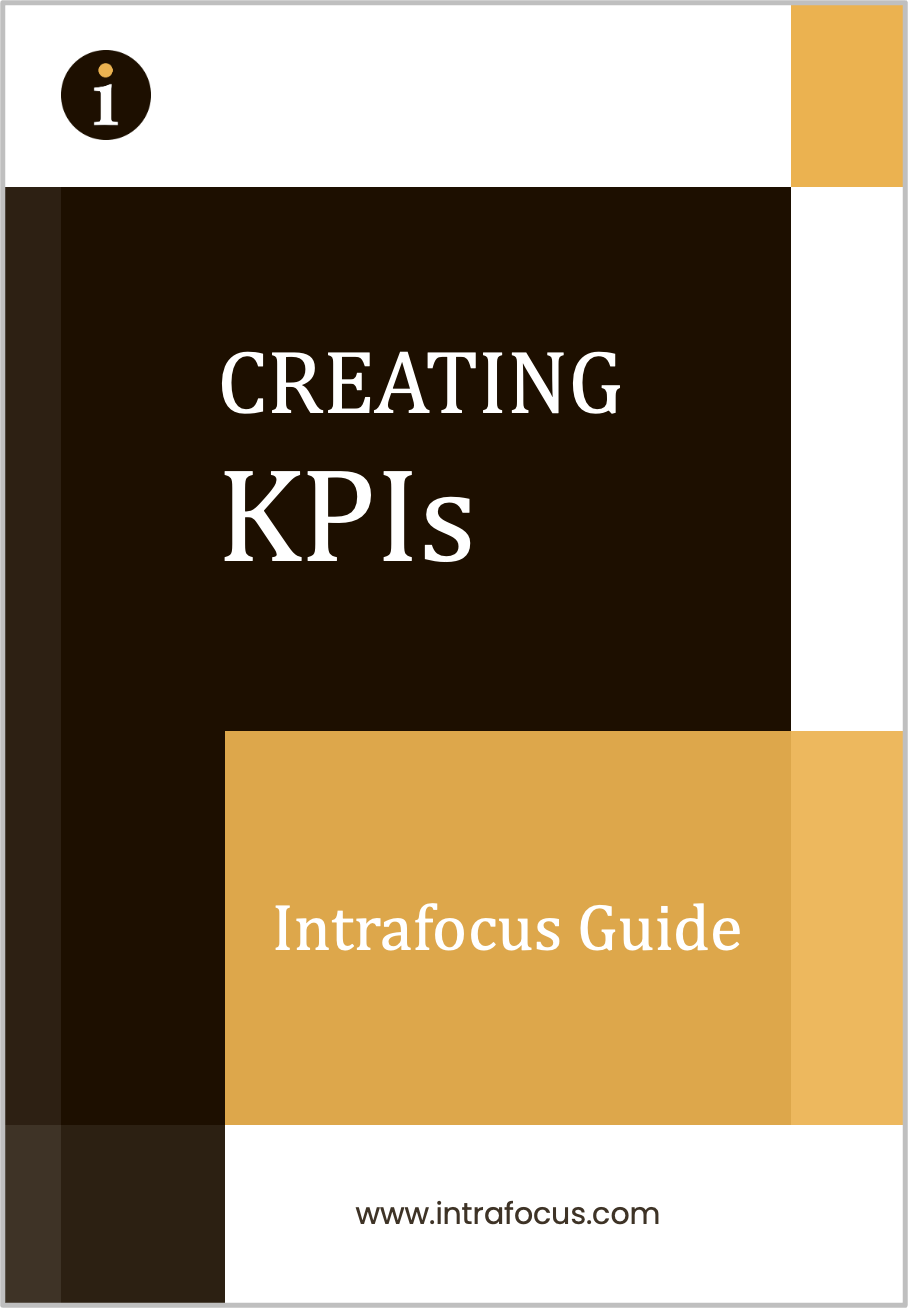The Importance of Alignment
Key Performance Indicators (KPIs) are not just statistical metrics but vital signs of a company’s health. As benchmarks, they allow businesses to measure their performance against specific objectives. However, alignment with the broader organisational goals is crucial to unlock KPIs’ full potential.
Imagine setting a personal goal to lose weight. If the KPI you’re tracking is the number of calories consumed, but you neglect the quality of those calories or don’t consider the calories burned, you might find your efforts are in vain. The same principle applies to businesses. When KPIs resonate with the company’s overarching objectives, they provide a clear roadmap to success, ensuring every department and individual knows the direction and how their contributions fit into the bigger picture.
However, as straightforward as it sounds, the alignment process can be challenging. Misaligned KPIs can derail strategic plans, waste resources, and lead to missed opportunities. Therefore, understanding the alignment’s significance and knowing how to achieve it is pivotal for any forward-thinking organisation.
The Consequences of Misaligned KPIs
Just as a misaligned wheel can make driving difficult, misaligned KPIs can lead a business down a rocky road. The fallout can be significant. Let’s delve into why this alignment matters so much.
Firstly, misaligned KPIs can create confusion. Teams may work hard but in the wrong direction. They might think they’re on the path to success, but instead, they’re drifting away from the company’s main goals.
Secondly, resources get wasted. Time, money, and effort go down the drain when teams chase the wrong targets. Imagine spending money on ads targeting the wrong audience. That’s both costly and ineffective.
Additionally, misalignment can demotivate employees. When teams see their hard work not yielding the right results, morale can dip. They might question their role or the company’s direction.
Finally, there’s the risk of missed opportunities. With eyes fixed on the wrong metrics, businesses might overlook golden chances. They may fail to see new trends or shifts in the market.
It is crucial to ensure that KPIs are aligned with organisational goals. By doing so, companies can avoid these challenges and set themselves up for success.
Benefits of Perfectly Aligned KPIs
Steering an organisation toward its goals is like navigating a ship through turbulent waters. Just as a compass guides a ship, well-aligned KPIs guide an organisation. The rewards of getting this alignment right are manifold, ensuring smoother sailing and a more predictable journey.
Clarity and Direction: One of the prime benefits of aligning KPIs with organisational goals is clarity. Everyone in the organisation, from top-tier leadership to the newest recruit, understands the targets. This unified vision reduces ambiguity, ensuring all efforts point in the same direction.
Enhanced Decision-Making: When KPIs echo the larger goals, it is easier for managers to make informed decisions. They possess a clearer view of what’s working and what isn’t. This insight allows for adjustments and pivots in strategy, ensuring that resources are continuously optimised.
Improved Employee Engagement: Aligned KPIs provide employees with a sense of purpose. When they can directly correlate their daily tasks with the broader objectives of the organisation, it fosters a sense of belonging and purpose. This intrinsic motivation can lead to increased productivity and job satisfaction.
Resource Optimisation: Misaligned KPIs often result in wasted resources. However, when they’re perfectly aligned, there’s a clear understanding of where to allocate funds, time, and staffing. This ensures maximum impact for every dollar and minute spent.
Achieving Strategic Goals Faster: With everyone rowing in the same direction, organisational objectives are met quickly. The synergy created by aligned KPIs accelerates progress, often leading to surpassing goals and setting even loftier ones.
In essence, well-aligned KPIs are not just beneficial; they’re essential. They provide the roadmap that guides every action, decision, and strategy within an organisation, ensuring survival and flourishing in a competitive marketplace.
How to Align KPIs with Organisational Goals
Aligning KPIs with organisational goals isn’t a one-time activity; it’s a continuous process that requires thoughtful consideration and commitment. Here’s a guide to help navigate this essential alignment:
1. Understand the Organisational Goals: Before any alignment can happen, you need to understand of the organisation’s overarching goals. Are they financial, related to customer satisfaction, or market expansion? Make the goals specific, measurable, and time-bound.
2. Prioritise these Goals: Not all goals are of equal importance. It’s crucial to rank them based on urgency, impact, and feasibility. This helps in focusing on what’s genuinely pivotal for the organisation.
3. Identify Relevant Metrics: Once the goals are set and prioritised, it’s time to determine which metrics best represent them. For instance, if a goal is to improve customer satisfaction, then a potential KPI could be the Net Promoter Score (NPS).
4. Set Clear KPI Targets: Now that you have the KPIs, they need targets. These targets should be realistic yet ambitious, pushing the organisation to reach its best potential.
5. Communicate Widely: Ensure that everyone in the organisation, from leadership to frontline employees, understands these KPIs and how they connect to the broader goals.
6. Review and Adjust Regularly: The business landscape is ever-evolving. Thus, it’s essential to revisit and, if necessary, adjust the KPIs regularly to ensure they remain relevant and aligned.
7. Invest in Training: Ensure that team members have the necessary skills and knowledge to positively influence the KPIs. Training can bridge gaps and empower employees to contribute effectively.
8. Celebrate Milestones: Recognise and celebrate when KPI targets are achieved. This boosts morale.
By following this systematic process, organisations can ensure that their KPIs are not just numbers on a dashboard but powerful tools driving them towards their strategic objectives.
Real-world Examples: Companies that Excel
There’s no better way to understand the power of KPI alignment than to look at companies that have harnessed it to their advantage. Here are a few illuminating examples from the business world:
1. A Leading E-commerce Giant: One of the prominent online marketplaces had a clear goal – to enhance user experience and boost repeat purchases. They zeroed in on ‘Time to First Byte’ (TTFB) as their KPI. By improving website load times, they directly influenced user experience. The result? A substantial increase in return customers and sales.
2. A Renowned Ride-Sharing App: This company primarily aimed to expand its user base. They chose ‘Ride Acceptance Rate’ by drivers as a KPI. By ensuring that drivers promptly accepted ride requests, the company could offer better service, leading to more users opting for their platform over competitors.
3. Global Coffeehouse Chain: Intending to increase in-store purchases, this chain closely monitored the KPI of ‘Average Customer Dwell Time.’ They introduced comfortable seating, free Wi-Fi, and ambient music. The longer customers stayed, the more they bought – leading to higher revenue per store.
4. An Innovative Tech Startup: Aimed at rapid expansion, this startup tracked the ‘Customer Acquisition Cost’ (CAC) as a KPI. They experimented with various marketing strategies, always focusing on optimising the CAC. Their data-driven approach ensured they got the best bang for their buck in acquiring new users.
These examples underline a critical lesson: aligned KPIs, when chosen wisely and acted upon, can lead to transformational results. They can guide companies not only to meet but often exceed their strategic objectives. And while each organisation’s journey is unique, the underlying principle remains consistent: clear goals, relevant KPIs, and a steadfast focus on alignment.
Avoiding KPI Alignment Pitfalls
Even with the best intentions, organisations can sometimes stumble when aligning their KPIs with goals. Recognising and avoiding these common pitfalls can save time, effort, and resources.
1. Too Many KPIs: It’s tempting to track everything, but having too many KPIs can spread efforts thin and dilute focus. It’s crucial to zero in on a few pivotal metrics that drive organisational goals.
2. Vague KPIs: “Increase sales” sounds like a worthy objective, but it’s too ambiguous. Instead, a more precise KPI like “Increase quarterly online sales by 10%” provides clarity and direction.
3. Ignoring the Human Element: While data is vital, it’s essential not to overlook the human aspects. For instance, pushing for a higher number of customer service calls per hour might impact the quality of service, leading to dissatisfied customers.
4. Not Reviewing KPIs Regularly: The business world isn’t static. What worked a year ago might not be relevant today. Reviewing and adjusting KPIs regularly ensures they align with evolving organisational goals.
5. Setting Unrealistic Targets: KPIs should be challenging but attainable. Setting the bar too high can demoralise teams while setting it too low might not push them enough.
6. Not Communicating Clearly: If teams don’t understand the KPIs or see their relevance, they’re less likely to engage fully. Open and ongoing communication is vital to ensure everyone’s onboard.
7. Over-relying on Quantitative KPIs: While numbers are essential, qualitative KPIs, like customer satisfaction or employee morale, also play a significant role in an organisation’s success.
By being aware of these potential missteps, organisations can navigate the intricate process of KPI alignment more effectively. Remember, the goal isn’t just to align but to do so in a manner that’s holistic, inclusive, and adaptable to change.
Measuring and Ensuring Continuous Alignment
Achieving initial alignment between KPIs and organisational goals is commendable, but maintaining that alignment over time is equally crucial. Here’s how companies can measure and ensure this continuous alignment:
1. Periodic Reviews: Just like a car needs regular servicing, KPIs require periodic reviews. Set aside times, quarterly or biannually, to evaluate the relevance and effectiveness of each KPI in light of evolving organisational goals.
2. Feedback Loops: Incorporate feedback mechanisms, both from employees and stakeholders. They can offer invaluable insights about potential misalignments or areas for improvement.
3. Utilise Technology: Tools like Spider Impact can be instrumental in continuously monitoring the performance of KPIs. Real-time data and analytics can highlight discrepancies quickly, allowing for timely corrective actions.
4. Alignment Workshops: Organise workshops that bring together cross-functional teams to discuss KPI performance. Such sessions can uncover misalignments and foster collaboration for better goal achievement.
5. Monitor External Changes: Factors like market trends, competitor actions, or regulatory shifts can impact the relevance of your KPIs. Stay vigilant about such external changes and adjust your KPIs accordingly.
6. Celebrate Success: Celebrating success when a KPI perfectly aligns and drives success, celebrate it. This reinforces the importance of alignment. Conversely, if a KPI doesn’t produce the desired results, analyse why and use those lessons to refine your approach.
7. Employee Training: As goals evolve, employees must have the skills to influence new or revised KPIs. Regular training ensures that the team is always equipped to contribute effectively.
8. Establish a KPI Governance Structure: Designate a team or committee overseeing the KPI alignment process. Their focus will ensure that alignment remains a top priority.
In essence, continuous alignment is a journey, not a destination. By adopting a proactive and systematic approach, organisations can ensure that their KPIs remain in sync with their goals and drive sustained success.
The Lifeline of Success – Aligned KPIs
KPI alignment with organisational goals isn’t just a strategic move—it’s a lifeline to success in today’s complex business landscape. As we’ve explored, the harmony between what we measure and what we aim to achieve can spell the difference between mere activity and impactful progress.
Every example we delved into, from businesses flourishing with well-aligned KPIs to those navigating common pitfalls, underscores one fundamental truth: clarity in goals, paired with the right metrics, paves the path to success.
However, achieving and maintaining this alignment isn’t a solo effort. It requires the right tools, and that’s where Spider Impact from Intrafocus shines. Its intuitive interface, real-time analytics, and robust features simplify the complex task of KPI management, ensuring that your metrics remain attuned to your evolving goals.
As you chart your organisation’s future, consider how aligned your KPIs are with your strategic objectives. When in doubt or need of the best tools for the job, remember that Intrafocus and Spider Impact are here to assist.
Take the next step in KPI excellence. Explore Spider Impact today and set your organisation toward unparalleled achievement.


